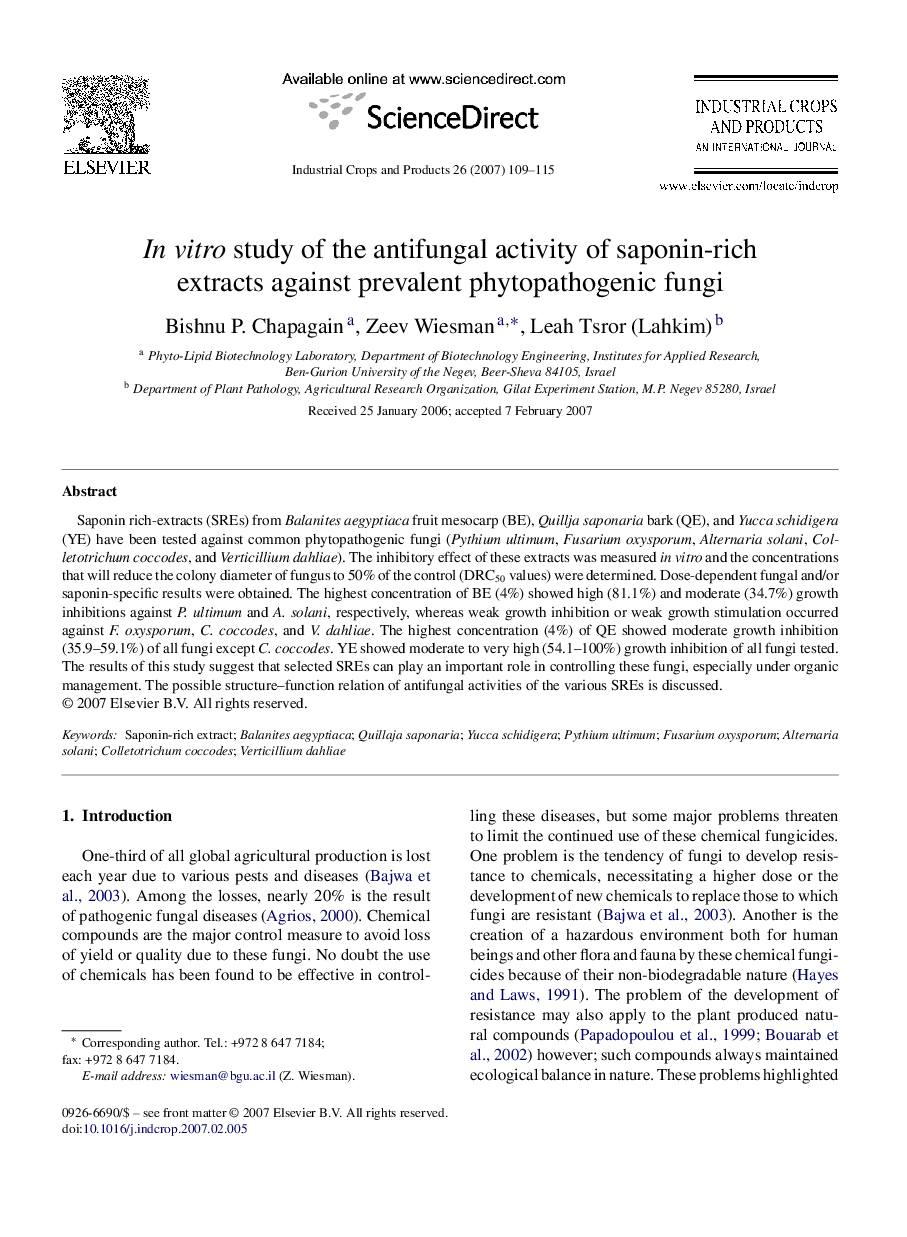| Article ID | Journal | Published Year | Pages | File Type |
|---|---|---|---|---|
| 4515200 | Industrial Crops and Products | 2007 | 7 Pages |
Saponin rich-extracts (SREs) from Balanites aegyptiaca fruit mesocarp (BE), Quillja saponaria bark (QE), and Yucca schidigera (YE) have been tested against common phytopathogenic fungi (Pythium ultimum, Fusarium oxysporum, Alternaria solani, Colletotrichum coccodes, and Verticillium dahliae). The inhibitory effect of these extracts was measured in vitro and the concentrations that will reduce the colony diameter of fungus to 50% of the control (DRC50 values) were determined. Dose-dependent fungal and/or saponin-specific results were obtained. The highest concentration of BE (4%) showed high (81.1%) and moderate (34.7%) growth inhibitions against P. ultimum and A. solani, respectively, whereas weak growth inhibition or weak growth stimulation occurred against F. oxysporum, C. coccodes, and V. dahliae. The highest concentration (4%) of QE showed moderate growth inhibition (35.9–59.1%) of all fungi except C. coccodes. YE showed moderate to very high (54.1–100%) growth inhibition of all fungi tested. The results of this study suggest that selected SREs can play an important role in controlling these fungi, especially under organic management. The possible structure–function relation of antifungal activities of the various SREs is discussed.
